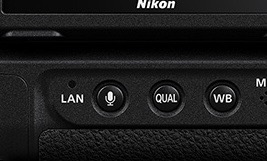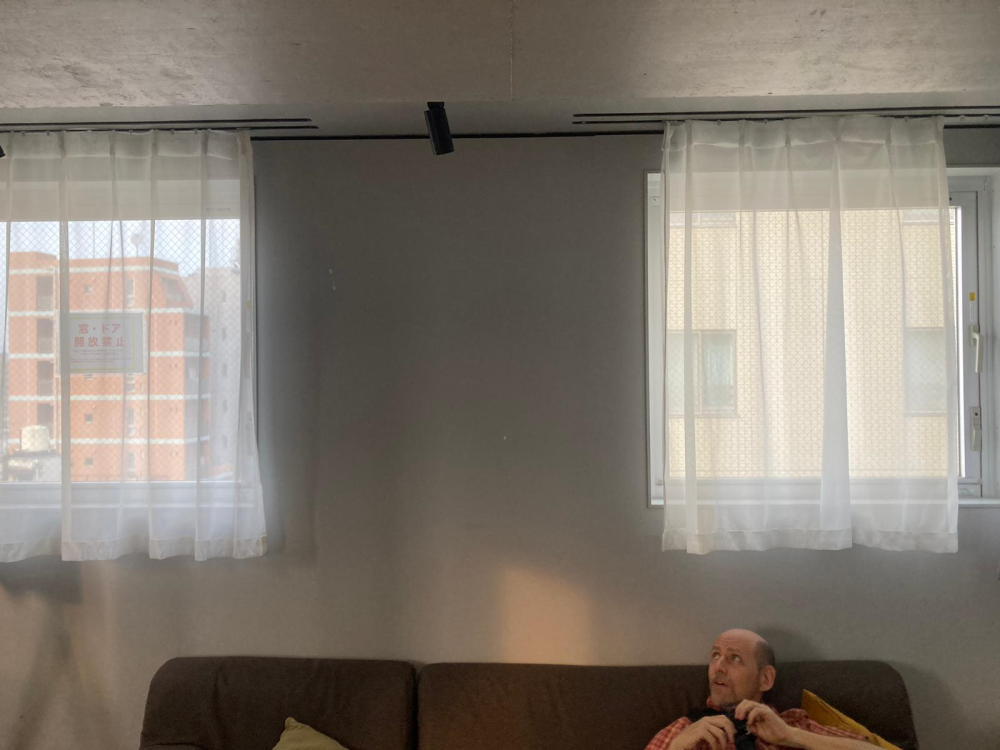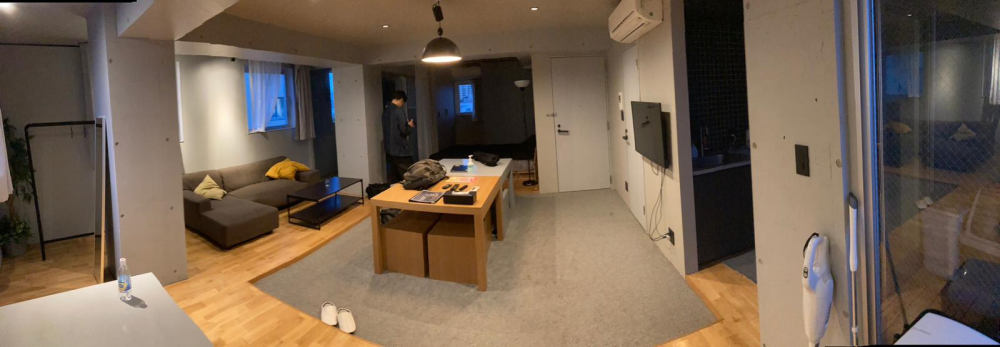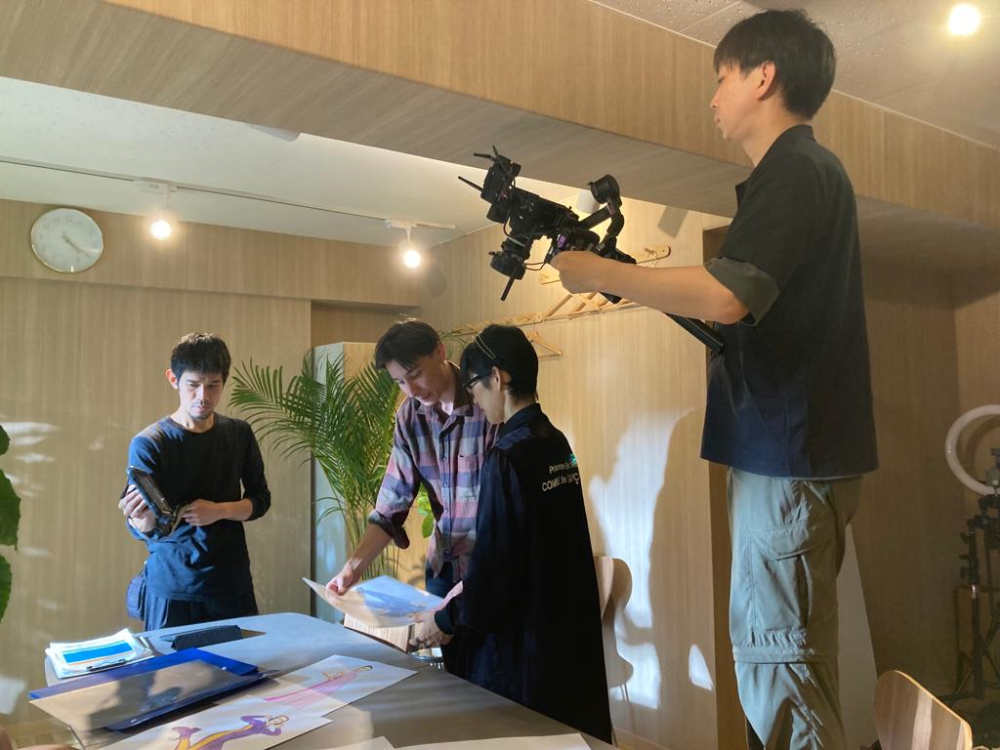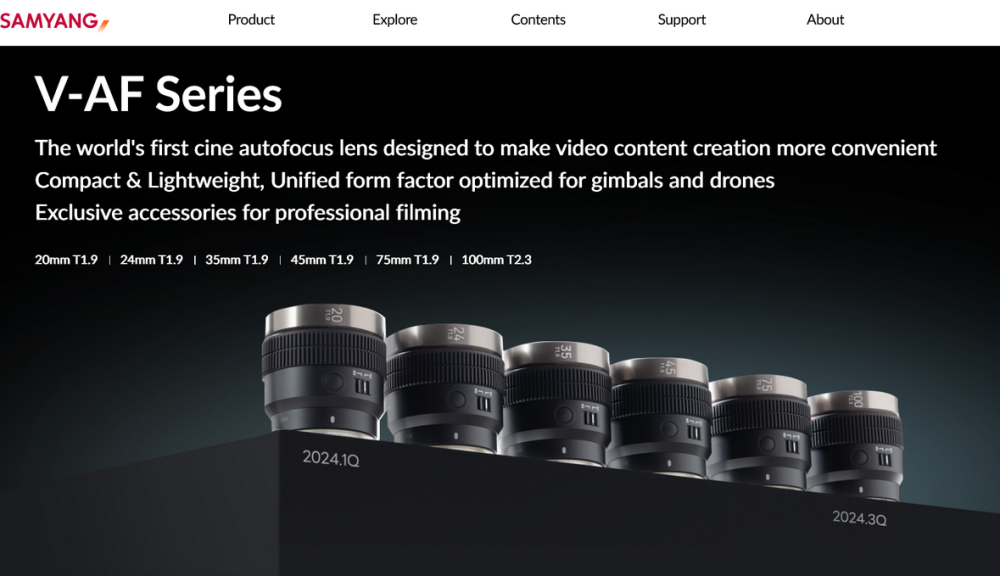Leaderboard
Popular Content
Showing content with the highest reputation on 06/12/2023 in all areas
-
3 points
-
When it comes to the specific case of the Z8/Z9, the answer to the question of “who the hell needs all that resolution?”, the answer, quite simply, is the target market for them do. These are cameras intended for photojournalists/sports photographers/wildlife photographers. In the case of the latter two in particular, with f2.8 long lenses costing £20-30 per millimetre of focal length, the variable 2x digital zoom functionality pays for the camera itself. If you are shooting a match then from your fixed position at one end of the field you will generally not have enough reach with a 400mm. Depending on the stadium you might actually be so far behind the goal line that even 600mm will struggle. As the distance is variable you end up having to bring 1.4x, 1.7x and 2x TCs whereas with the Z8/Z9 you can dial it in and not have to worry about losing stops of light, IQ and AF performance. Cropping using the digital zoom on these much higher resolution Z8/Z9 sensors, even at 2x is still giving you the D5 resolution and giving you impossible lenses such as 70-400mm f2.8 and 400-800mm f2.8 for free. Just that one aspect - which is standard operating procedure for the intended market rather than a niche outlier- is absolutely massive and justifies the bump in resolution. When it comes to the video side - again for its intended market - the 8K video is also a big deal in terms of practical rather than spec wanking purposes. Not only does it give sufficient resolution to enable the reframing to cut, say, a two person interview into a convincing multi-cam look without it falling apart (see the MEVO camera for almost getting this right) but it also addresses the issue of repurposing content for (whisper it quietly) vertical video at good resolution. We may not like vertical video but it is now a fact of life for mobile journalists having to provide vertical versions and regular versions of content for online consumption and these two cameras are ideal for it. It is also a growing fact of life for event filmers too and with the AI “revolution” seemingly coming for an awful lot of roles in the next few years, covering live events might be the last bastion for many people wanting to stay in the game. I say all this of course as someone who ended up not buying either of them ! However, If I was still doing the work I used to then I wouldn’t have blinked as it is absolutely fantastic for that role as it is intended to be, for the reasons above and more. But I don’t, so I didn’t. A rare case of objectivity that is completely out of character and which I am blaming on the jet lag.3 points
-
https://www.kickstarter.com/projects/make-believers/mystery-romance-short-the-orange-of-daydreams From the director of MAKE-BELIEVERS: Any helpful hand is welcome, thanks for watching! :- )2 points
-
Marty, ...the remark of Mike is the same of ours, just using his irony to let implicit the same friendly tone we are expecting from everyone here.2 points
-
I’m not receiving demand for it but jumped on that train ahead of it leaving the station. Rare for me! I switched from 4k to 6k last 2 jobs just so I can re-crop productions from my usual 16:9 to 19:6 for social and shorts.2 points
-

Panasonic S5 II (What does Panasonic have up their sleeve?)
newfoundmass and one other reacted to BTM_Pix for a topic
So after what can only be described as a Devon Loch moment (ask your Dad) in the absolutely nailed on not going to change my mind purchase of a Nikon Z8, I now find myself joining you as a fellow Panasonic S5ii owner. I had been struggling with the sunk cost fallacy aspect of buying the Z8 as a way of stopping my collection of pro Nikon glass collecting dust in the Peli cases but eventually bit the bullet and accepted reality. The Z8 would indeed have given them an extended life but I’m not going to be hauling big f2.8 teles and zooms around with me any more so would you have eventually have to have caved and built up a Z mount collection to go with it. Financially, that would be out of the question anyway and I couldn’t ignore the value proposition of the S5ii route. So, after a bit of judicious choice of a combination of used and new offers and bundles, I’ve managed to acquire all of the following for roughly the same price as the Z8 and one of its Cf cards. Panasonic S5ii Panasonic 20-60mm f3.5-5.6 Panasonic 35mm f1.8 Panasonic 50mm f1.8 Panasonic 85mm f1.8 Sigma MC-21 EF-L adapter Sigma 16-28mm f2.8 Sigma EVF for my Fp As I have other L mount cameras (Leica SL and Sigma Fp) this collection will benefit all of them. As I say, the value of getting not just a camera but three fast-ish primes, a very interesting kit zoom, a fast ultra wide zoom, the EF adapter and the long awaited completing part of my Fp puzzle couldn’t be ignored. And all of them are light and compact compared to what I would’ve been rocking on the Z8. Essentially, I went in for what I thought at my age might be a forever camera and walked out with my forever lens mount instead. First impressions are that I don’t know enough about it yet to have any. It’s not to say I haven’t used it but it’s on all default settings, I haven’t really read the manual and I’m here on holiday so I haven’t/won’t put in the work to have a better feel for it. I’ll also defer judgement until after the imminent firmware update. On a surface level, I’ve found the IBIS to be fairly impressive but the AF, whilst a huge leap forward over other L mount cameras that I’ve got, can be a bit of a mixed bag in lower light, particularly the face detect. Again, I’ve got everything on default so I’m sure it can be tuned to be better. What I will say as well is that the Sigma 16-28mm f2.8 is worth a look for anyone contemplating it.2 points -
Yes, the voice memo has been a standard feature on pro bodies for many years. Operated as per the Z9 here by a dedicated button on the back panel. Yes you could do that and there will be dedicated photo editors on the other end of your LAN cable who will do that for you even without the voice prompt (which you would mainly use for player identification for the caption anyway). Not everyone has the luxury of an editing team though and not every match is covered that way either. In those instances when you are on your own then having it in camera is the best solution and by best I mean fast because it’s all about getting the image onto the photo desk of the newspaper as quickly as possible. The bigger the file (as the unedited version would be) has speed implications all along the way from ingest into the laptop, editing and export and most importantly out of the stadium when you won’t always have the luxury of wired internet and will often be having to even tether off your phone. Another less obvious advantage is in terms of navigating the image on the back of the camera for player identification and focus checking. If you’re using your 400mm as a 600mm because the opposite goal is so far away then you have one less button press to get it to the right size on playback on the camera. I know that sounds trivial but it isn’t (particularly in gloves in the pudding down rain) and every second counts when you might be having to quickly analyse a 30 shot burst to find the best one. What a pity the Z8/Z9 only do it in video mode then, at least in the current firmware.2 points
-
I think one side to this whole thing is the fact that for some of us we focus on the other aspects of the business all day long: business, pitching, writing, editing etc. Sometimes having a place to discuss cameras and lights and stuff is just plain fun and relaxing, somewhat pointless, but fun nonetheless.2 points
-
Great post - I just wanted to add to this from a colour grading perspective. I did a colour grading masterclass with Walter Volpatto, a hugely respected senior colourist at Company 3, and it changed my entire concept of how colour grading should be approached. His basic concept was this: You transform the cameras footage into the right colour space so it can be viewed, and apply any colour treatments that the Director has indicated (like replicating view LUTs or PFEs etc) - this is for the whole timeline You make a QC pass of the footage to make sure it's all good and perhaps even out any small irregularities (e.g if they picked up some outdoor shots and the light changed) At this stage you might develop a few look ideas in preparation for the first review with the Director Then you work with the Director to implement their vision The idea was that they would have likely shot everything with the lighting ratios and levels that they wanted, so all you have to do is transform it and then you can fine-tune from there. Contrary to the BS process of grading each shot in sequence that YouTube colourists seem to follow, this process gives you a watchable film in a day or so. Then you work on the overall look, then perhaps apply different variations on a location/scene basis, and then fine-tune particular shots if you have time. He was absolutely clear that the job of the colourist was to simply help the Director get one step closer to realising their vision, the last thing you want to do as a colourist is to try and get noticed. It really introduced me to the concept that they chose the camera package and lenses based on the look they wanted, then lit each scene according to the creative intent from the Director, and so the job of a colourist is to take the creativity that is encapsulated into the files and transform them in such a way that the overall rendering is faithful to what the Director and Cinematographer were thinking would happen to their footage after it had been shot. Walter mentioned that you can literally colour grade a whole feature in under a week if that's how the Director likes to operate. I have taken to this process in my own work now too. I build a node tree that transforms the footage, and applies whatever specific look elements I want from each camera I shoot with, and then it's simply a matter of performing some overall adjustments to the look, and then fine-tuning each shot to make them blend together nicely. In this way, I think that the process of getting things right up front probably hasn't changed much for a large percentage of productions.2 points
-
Blackmagic Micro Cinema Super Guide and Why It Still Matters
solovetski and one other reacted to TomTheDP for a topic
Things used to be a lot more conventional. Films tended to carry the look of the film stock they were shot on. Nowadays it is easy to go crazy with exposure as you have a 100% accurate monitor to reference. On top of that everything is digitally color graded to the point where it can be hard to tell what camera they were shot on. Though I can still often tell as the sensor/color of the camera often seems to shine through the manipulation. That isn't always the case of course. But regardless it's all just personal preference. Take Roger Deakins for instance. He prefers to do everything in camera, where as others will do a large amount in post. But in terms of the Alexa having a clean image I agree to some extent. At least compared to film it is cleaner, higher dynamic range(maybe), and probably sharper. That is just taking into consideration the Alexa Classic sensor. These are all conclusions Deakins had after shooting with the Classic on his first digital film "In Time". His word isn't God but he certainly had his fair share of experience shooting 35mm film content. I have never shot on 35mm film only for photography. That is a 12 year old camera, now we have higher resolutions from ARRI, 3.2k, 4.5k, or 6k rather than 2.8k, RAW recording, even higher dynamic range. But what I will say is at base iso of 800 the Alexa Classic isn't particularly clean. I tend to shoot 200-400 when I want really clean footage. That said it has a nice clean texture, meaning the noise is pretty consistent, lacking in color noise unless you really under expose badly. I rate the Alexa at 1600 iso, which again isn't clean but it's pleasant. That gives you 7 stops of highlight latitude but not much in underexposure. Most other cameras fair worse. Deakins commented on cameras looking too digital. He doesn't care much for emulating film but did admit the Alexa has a natural texture and if that were to go away you might be left with something too clinical and lifeless. I guess the Alexa 35 has in camera textures which I guess solves that issue. Deakins was one of the first to embrace digital and pretty much immediately conclude that it is superior to film, at least for him. I still look at 35mm film as the golden standard. I was brought up on it and there is something magical about it for me. In someways I was brought up on Alexa ALEV3 as well. Most of my favorite modern films were shot with that sensor tech. There are some cinematographers noticing that the Alexa 35 Alev4 sensor/pipeline feels more digital. The motion rendering, the color science. ARRI has always been known for giving true to life looking colors with nice skintones. But compared to the newer sensor the starting point on the ALEV3 cameras does have a look to it. I assume it is similar to what Blackmagic did between the older and newer cameras like you mentioned. Going from a kodak 2383 to a standard rec709 look. I suppose the option to actually shoot on film for people like me will always be there, assuming the budget allows. I've heard some very experienced cinematographers comment on how they can't seem to get the same look from digital as they do film. That may be them showing their age. Tools like Dehancer have made it a lot easier to emulate that look. I will admit I have seen a few videos that were incredibly well done in terms of film emulation. Although I would say they are the minority. I just prefer to get it in camera especially considering I am often not involved in post. Again that is just me and I am in the minority.2 points -
What would you give up?
PannySVHS reacted to Rinad Amir for a topic
ibis off for love of god we dont need it. Give us internal NDs1 point -
More pictures and less talk, good example.1 point
-
@PPNSI'd take any older cinema camera, eg Arri Alexa Classic, Red Epic, Sony F55, Ursa etc, as well as the BMMCC (which, for whoever has used it extensively, is a cinema camera, regardless the initial 'crash camera' marketing) over any newer Mirrorless (Lumix (I love their cameras by the way), Sony (haven't used the A7s III so I can't comment), Canon, Fuji, etc), at any type of work (of course not necessarily Instagram run and gun etc) But that's just me, based on years of testing. Every other opinion is welcomed of course. But since we're talking about the BMMCC here, yes it's a perfectly cinema camera for me. @kye& @TomTheDPcool posts!1 point
-
Unfortunately. It's not so different when I hear people saying they don't watch old movies because of their grainy aspect. Or why people shoot B&W when the world is not made of colour blindness. Or yet they can barely handle actors when not Hollywood stars. And on and on. To put the bar high is not so easy, to make it lower beats it ;- )1 point
-
It is not easy for me to like a forum post when the nice parts are mixed with some akward personal call outs. Some of the assumptions about one and another sound like there is a desire for misunderstanding eachother. Makes me leave the thread and topic behind. Certain advises and especially some so called advises are better off by being sent as private personal message. Some hassles can be light enterainment, but the border of becoming unbearable is close enough.1 point
-
I shoot and edit professional content all day long. While I would love to upgrade to a Red Komodo, or Fx6 or something, I'm still using GH5s, G85s, an S1, etc because I can't really justify the costs of upgrading. It would be fun, but I know the films I'm working on would be much better off dropping that 10k into production instead of gear. I just shot an entire $50k doc on an S1 and Canon R6 and am totally happy with the final look. Realistically I think if I get a new camera in the next couple of years, it will be a FS7 or something. Solid image like the S1, just beautiful ergonomics for doc work. Every time I use one it just feels like driving a luxury car... Not necessarily a good business decision, but purely for the joy of use. Not so hard of on the wallet thankfully used these days too. While upgrading gear is really fun, I think at the end of the day sticking with the same stuff for years on end is the best thing you can do for your image quality, especially if you are working with something decent (like anything made in the last five years)1 point
-
1 point
-
My point was to the exposure, field of view, AF consistency and optical degradation. If I am using my 400mm at f2.8/ISO6400 and 1/1250th and either crop in post to get to an 800mm FOV or use the Hi-Res Zoom then the exposure won’t change, the AF won’t change and the optical quality won’t change. If I attach my TC-2.0x then my exposure WILL change (by two stops), the AF will degrade and as good (relatively) as the Nikon TC is then it does take a hit. So the lenses will always be f2.8 and my exposure remains unchanged (which is hugely important when even category A stadiums for night matches are very tight when balancing high shutter speeds and ISO) and my FOV needs are met in a more dynamic way. A 70-200mm becomes a whole lot more useful when an extra 100mm can be activated without having to commit to having it on all the time. Will they be “real” f2.8 in terms of absolute equivalence ALL the way throughly the range once they’ve got beyond their base focal length ? Nope. But the compromise in those areas when using a clear image zoom type of function compared to using TCs when you need extra reach on tap are absolutely minimal compared to losing two stops of light and AF performance as and when you need it. HOWEVER….. Having said ALL of that, I’ve just discovered to my researching shame that unlike the Sony (and JVC) options the Hi-Res Zoom feature is ONLY available in video mode not stills! So disregard everything I’ve said on the subject from a sports photography point of view as it is moot 🙂1 point
-
1 point
-

New Fuji X-S20 (with DCI & UHD 60p plus 6.2K/30P 4:2:2 10-bit internal)
techie reacted to Marcio Kabke Pinheiro for a topic
Chris and Jordan said in a PetaPixel podcast that they did not reviewed the X-S20 because...no unit was sent to them, as I suspected. Looks like Fuji really prioritized Europe - in the last days lots of reviews popped on Youtube from European people, and looks like there was a paid Malta trip to try the camera. Don't know if there was really few units available and Fujifilm in USA and Canada had no units available, but there it is. Unfortunately, most of the reviews are 80% talking about the features and very few movie tests. In fact, the most useful review was from a Australian fashion photographer, Julia Trotti, which plugged a HDMI recorder on camera and went to a photo shoot, and made some test videos. She had zero intention to be technical, but was the only one that showed the new AF system in action. I've brought my X-S10 to a playground and made still and video from my daughter, using the Sigma 18-50 and boy, did not remembered that the AF was SO bad. Specially shots when eye / face detection af target is green, but looking in the computer after the shot was out of focus. And was with only her in the frame - if my wife was in the frame too, the af target goes nuts and jumps constantly between them (albeit looks like that it is not a Fuji exclusive behaviour - saw reports that it happens with other brands too). Video was a tad better, but using single area af and movinf the box with the joystick. If Fuji had object tracking in vídeo, probably would be "perfect" (not pin sharp, but it is not critical as it is in stills). Comparing to the footage of the camera interface in the Julia's videos with my experience in the weekend, looks like (comapred to the X-S10): - The eye / face detection works better and with the subject farther, in stills. - Better in movies too, but saw some points losing the af. - But it looks like that Fuji AF still is behind the competition - worse for sure than Sony and Canon, probably than Nikon, and a little behind from Panasonic in the S5II. I will probably upgrade, because of the battery (the playground shot was around 70 stills and 5 minutes of 4k video, and the battery already dropped more than half the charge), 10-bit video (never used any log mode beacuse of the 8-bit in the X-S10) and the better-ish AF - and since Kaizen is dead, any more improvements on Fujifilm will the in the cameras with the newer processor. But I think will no be a very big improvement.1 point -
People should not attack whoever is. It's pointless.1 point
-
As the popular saying goes, “Amateurs focus on the tools, professionals work on the business and masters seek the light”. It is largely true, but unless we are complete snobs, at all levels, we’re still interested in the tools. Most anyway… I think this philosophy is misunderstood as in you don’t simply move from one of the above groups to the next, but move through one phase and accumulate another. The reality is though that most cannot move beyond the ‘tools’ aspect which is the same in all industry and craft whilst those with sufficient talent (and often drive) will naturally add the other elements as they progress. But ain’t nothing wrong with ‘masters’ discussing their tools 😉 The other thing about discussing tools/kit/cameras is that it’s more ‘fact’ based than subjective so easier to discuss such as 50mp vs 24mp or “maxes out at 6400 iso whilst X can go to 25600” and “camera B has shutter angle whereas camera A does not”. It’s easier to ‘discuss’ than say the positioning and type of lighting in certain scenarios. More tangible as it were. I’m personally interested in the kit, but only to a point. I’m not a big tech fan or one for change but at the same time appreciate the right tool for a job will make your life/work easier. And often, more enjoyable. I’m much more interested in the ‘how’.1 point
-
I'd imagine you could shave off a decent amount of weight. Camera's are already so small though so we are talking pretty small amounts in general.1 point
-
1 point
-
I just sold mine, now I am almost regretting it. 😅 I really wish companies would continue pursuing the film look. I think even ARRI has moved to high res/clean digital look with the Alexa 35. I get it, capture the cleanest image possible and make all the choices in post. It just isn't my style at all.1 point
-
I am kind of over the GH5 but it's certainly a capable camera. You can definitely get a worse image from a technically better camera, so much has to do with all the other factors that go into a production. Some will say, myself included, that I just like geeking over camera tech and that it is a hobby. But how much is the interest being influenced by these companies. Are they dictating our interests through marketing? Are people capable of independent thought or are we all just following the arrows laid by these large corporations. It definitely sometimes feels like the latter. Content and the world seems to be less and less creative and more and more just a bunch of cheap and lifeless products paired with boring and lifeless people. I am getting too pessimistic at this point. There is certainly still a ton of creativity in the world. It is just easier to talk about product releases I suppose as it is easy and doesn't really challenge the mind.1 point
-
Tested it again in Prores 422, against GH5, G9 (which I love), A7iii, Eos R, all in Log 4k, and it's night and day. I only tested it against those cameras because these are the ones I've had available. I really wouldn't believe the difference if someone would have told me without seeing it with my own two eyes. Tested it against Bmpcc6k (in Braw) as well, and just loved the character it had once again and if exposed well (because I shoot in Prores), many of the times I prefer it. Bmpcc6k is easier to use though, in Braw, with built in false colors as well, but I love the sensor on the BMMCC. They did an excellent job on that sensor.1 point
-

Testing Dynamic Active Stabilization: Walking While Shooting in 4K 60p
Emanuel reacted to hyalinejim for a topic
I guess if grouchy people didn't post on this forum there would be fewer posts to read. So it's a good thing, really. Carry on! 🥸1 point -
Well now, that sucks. The GH5 was the first great consumer camera, in my view, and is not irrelevant today. I moved from that to a GH6 and then S5ii within the last 12 months. Comparing GH5 to S5ii the only major differences for me are AF, 2 stops more in the highlights, and full frame versus 1.29x crop with Speedbooster. That's all. And my videos look basically the same as they did before.1 point
-
Absolutely. Once you've managed to go through all the effort of hiring a team of people and hiring a good amount of lighting equipment etc, you're not going to quibble about the cost if hiring a dedicated cinema camera, that would be silly. Of course YT is dedicated to new shiny things, that's to be expected. The reason I have some frustration here is that this attitude of OLD = CRAP is unfortunately very common on this forum, where (I would hope) no-one has a financial incentive to promote new cameras. I'm talking both subtly as well as directly, not only are the older cameras given less attention, but I have been explicitly told by forum members to stop talking about the GH5, even though it was relevant to whatever brand new camera body we were discussing and I was presenting a balanced view of pros as well as cons. It's one thing to criticise a camera, but to say that it's no longer relevant or even welcome in a discussion due to its age, that's a whole other level. To tie this together, I absolutely agree that no-one is using a BGH1 or GH5S as an A/B/C camera on a major production, but the fact that they're used at all by anyone in that world should give pause to those who think that they're no longer fit for use in low budget / no budget / amateur settings. I mean, I thought the entire premise of EOSHD was to use and make the most of affordable consumer cameras for video.1 point
-
Hey, great pictures there! 😍👌1 point
-
It is for acquiring plates though. DSLR's have been used for a while for crash cams or things like this. I remember the 5d was listed on the Avengers. Not really going to be ever seen as an A, B or even C cam on a major production. This isn't to discount the GH5 or any other camera just being realistic. There are some good voices on youtube. Most channels are selling cameras though so of course they are not going to promote old stuff. Consumerism is definitely in full swing though and the filmmaker market is insane in this regard. There is a recent trend to do reviews of old cameras which is refreshing (maybe saying it is a trend is exaggerating it).1 point
-
Yes, but have they shot weddings?1 point
-
Yeah, you've heard well but looks like people have no shown a single bit of love (yup, at least throughout this forum here) about their effort to satisfy all of our needs with light, sharp (even 8K, folks! : D) and really effective unique launch with consistent colour rendering, focus, let alone an inexpensive price range ; ) https://www.samyanglens.com/en/product/v-af.php You can find a few interesting tests and alike on YT as usual ; ) but it's here among us where the sharing of your thoughts are particularly welcome :- )1 point
-
Adapted to Nikon Z8/9, hmmmm…1 point



